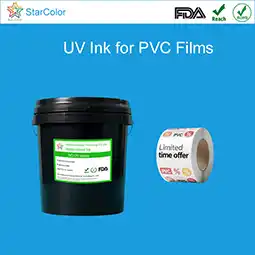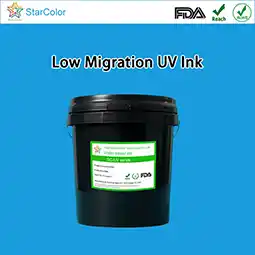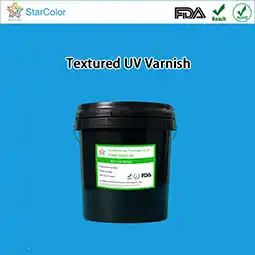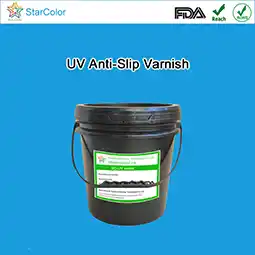What are the recommended curing or drying methods for water-based ink on non-woven fabrics
Date: Jul 31 2023 From: Star Color Views:
Nonwoven fabrics, due to their loose and porous fibers, low surface tension, and poor heat resistance, present special requirements for the drying of water-based inks. It is necessary to quickly remove moisture to avoid issues such as “bleeding” or “adhesion” of the ink, while also controlling the temperature to prevent shrinkage, deformation, or even melting of the nonwoven material. Currently, mature drying methods, including hot air drying, infrared drying, and UV curing, have been widely applied. However, each method has significant differences in terms of their suitability for different applications and effectiveness.
This article systematically analyzes the drying/curing methods for water-based inks on nonwoven fabrics, providing a full-process guide that covers "method selection + parameter optimization + problem-solving," aimed at helping businesses improve drying efficiency and product quality.
Core Premise
Before selecting a drying method, it is essential to clarify the core requirements for drying water-based ink on nonwoven fabrics. This forms the basis for adapting the method:
- Fast Surface Drying to Prevent Adhesion: Nonwoven fabrics have large gaps between fibers, and water-based ink can easily penetrate. Surface drying needs to be achieved in 1-3 seconds to prevent smudging during winding.
- Complete Drying to Reduce Residual Moisture: The moisture content of the ink needs to be reduced to ≤2%. If moisture is left behind, it could cause the ink layer to peel off or lead to mold growth on the nonwoven fabric.
- Low-Temperature Protection for the Substrate: PP/PE nonwoven fabrics have poor heat resistance, so drying temperatures should be controlled between 40-80°C to avoid shrinkage greater than 3%.
- Uniform Drying Without Blind Spots: Nonwoven fabric surfaces may have fuzz, wrinkles, or uneven textures, requiring uniform coverage during drying to avoid “ghosting” or uneven colors.
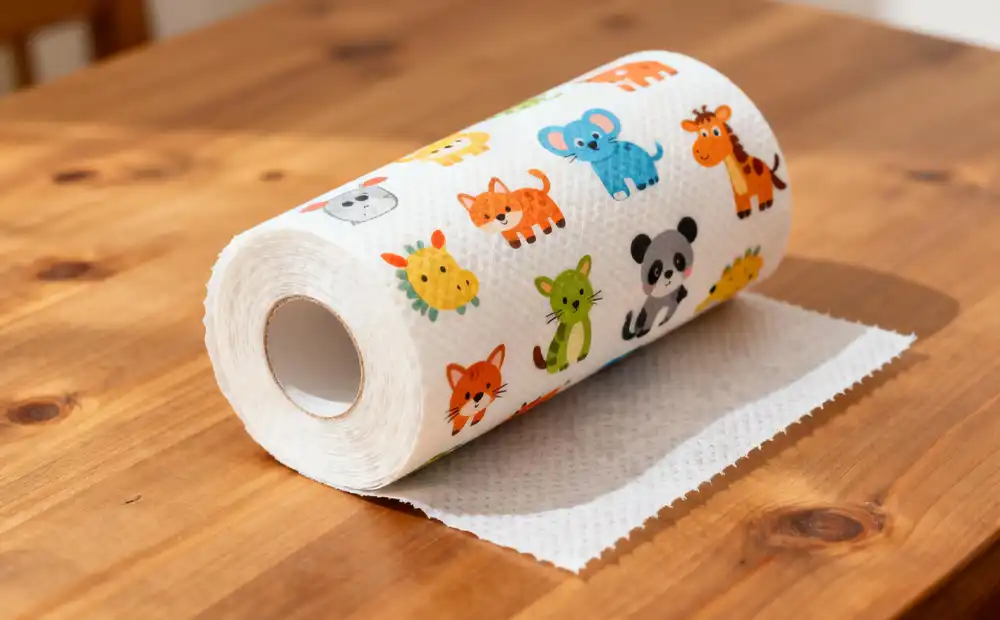
5 Recommended Drying/Curing Methods
1. Hot Air Drying
Principle and Advantages: Hot air drying involves blowing heated, clean air onto the surface of the printed nonwoven fabric. The air accelerates the evaporation of moisture and penetrates into the fiber gaps to facilitate internal moisture diffusion. This method is cost-effective, easy to operate, and suitable for PP, PET, and viscose nonwoven fabrics, especially for small to medium batch production.
Key Parameter Optimization:
- Temperature Control: Standard PP nonwoven fabrics should be dried at 45-60°C; for high-temperature modified nonwoven fabrics, temperatures can be increased to 70-80°C, but the dwell time should be shortened.
- Air Speed and Pressure: Airspeed should be 2-3 m/s, and air pressure should be 0.1-0.2 MPa to ensure even air coverage.
- Dwell Time: Adjust according to ink layer thickness. For thin layers (8-10μm), drying should take 3-5 seconds; for thicker layers (15-20μm), 6-8 seconds. The production line speed can be adjusted (15-30 meters/minute).
- Nozzle Design: Use staggered nozzles to prevent the hot air from directly impacting the nonwoven fabric surface, which could cause wrinkles, while also improving hot air utilization.
2. Infrared Drying
Principle and Advantages: Infrared drying utilizes the thermal radiation characteristics of infrared light to directly heat the ink and nonwoven fabric, making the moisture evaporate from the inside out. This avoids the problem of traditional hot air drying, where moisture remains inside while the surface forms a crust. Infrared drying is 30%-50% more efficient than hot air drying and is especially suitable for thick ink layers and highly absorbent nonwoven fabrics.
Key Parameter Optimization:
- Infrared Wavelength Selection: Mid-wave infrared (2-5μm) has moderate penetration, suitable for most nonwoven fabrics. For thicker ink layers or high-absorbent substrates, long-wave infrared (5-10μm) should be used to heat deeper into the fiber gaps.
- Power Density: Typically set at 20-30 kW/m²; for PP nonwoven fabric, control at 20-25 kW/m²; for PET nonwoven fabric, it can be increased to 25-30 kW/m².
- Distance Control: Maintain a distance of 15-20 cm between the infrared lamps and the nonwoven fabric surface, keeping the distance consistent to avoid localized temperature differences.
- Ventilation Support: Use exhaust fans to expel evaporated moisture and prevent humidity in the workshop from affecting the drying process.
3. UV Curing
Principle and Advantages: UV curing involves using ultraviolet light to initiate resin crosslinking and curing, without the need to evaporate water. Drying time is only 0.5-1 second, and the ink layer offers superior abrasion resistance and water-wash durability. This method is ideal for medical protective clothing, high-end home textiles, and other applications requiring fast drying and durable ink layers.
Key Parameter Optimization:
- UV Lamp Type: LED-UV lamps should be preferred because they use only 1/3 of the energy of traditional mercury lamps and produce no ozone, making them suitable for environmentally-conscious workshops. The power should be 80-120W/cm.
- Curing Energy: Typically set at 80-120 mJ/cm² to ensure an ink crosslinking degree ≥90% and unreacted monomers ≤0.1%.
- Conveyor Speed: The curing energy should match the conveyor speed. For 100 mJ/cm², the speed should be 20-30 meters/minute to avoid insufficient curing at higher speeds.
- Cooling System: Ensure proper cooling after the UV lamp to prevent the heat generated by the UV light from deforming the nonwoven fabric.
4. Microwave Drying
Principle and Advantages: Microwave drying uses high-frequency electromagnetic fields to cause water molecules within the ink and nonwoven fabric to vibrate, generating heat. This ensures uniform heating from both inside and outside, making it ideal for nonwoven fabrics with high moisture content or thicker material.
Key Parameter Optimization:
- Microwave Power: Adjust the power based on production line width. For a 1.2-meter-wide line, use a 30-40 kW microwave generator, ensuring power is not too high to avoid overheating or carbonizing the fabric.
- Heating Time: Set to 2-4 seconds to ensure that moisture evaporation is ≥95%, with the moisture content reduced to below 2%.
- Leakage Prevention Design: The microwave leakage should be ≤5 mW/cm², and metal shielding should be installed around the equipment to protect operators.
- Exhaust Support: Strong exhaust fans should be installed at the top of the microwave drying chamber to expel moisture vapor and prevent humidity from affecting drying efficiency.
5. Combination Drying
Using a single drying method may not meet all requirements, and combination drying methods are gaining popularity due to their “complementary advantages.” Common combinations include:
- Hot Air + Infrared Combination: Hot air achieves surface drying, while infrared provides deep heating, making it ideal for thick ink layers on PP nonwoven fabric. The drying efficiency is 40% higher than using hot air alone.
- Infrared + UV Combination: Infrared preheats the surface, and UV curing achieves rapid crosslinking, suitable for medical protective clothing that requires both rapid drying and high durability.
- Microwave + Hot Air Combination: Microwave drying provides deep heat, while hot air removes moisture, preventing recondensation of moisture on highly absorbent nonwoven fabrics like viscose.
Method Selection Decision Table: Quickly Match by Nonwoven Fabric Type and Requirements
| Nonwoven Fabric Type | Ink Characteristics | Core Needs | Recommended Drying Method | Key Parameter Reference |
|---|---|---|---|---|
| PP/PE Nonwoven Fabric | Standard water-based ink | Fast drying, prevent shrinkage | Hot air drying / Infrared drying | Temperature: 45-60°C, Time: 3-5 seconds |
| Viscose / Cotton Nonwoven Fabric | High solid content ink | Deep drying, uniformity | Microwave + Hot air combination | Microwave power: 35kW, Hot air temperature: 50°C |
| PLA Biodegradable Nonwoven Fabric | Low migration water-based ink | Low temperature drying, maintain biodegradability | Low-temperature hot air | Temperature: 35-45°C, Vacuum: -0.085 MPa |
| Medical Protective Nonwoven Fabric | UV water-based ink | Fast curing, alcohol resistance | LED-UV curing + air cooling | Power: 100W/cm, Energy: 100mJ/cm² |
Conclusion:
The choice of drying method for water-based ink on nonwoven fabrics primarily hinges on finding the optimal balance between temperature, time, and energy consumption based on substrate characteristics and product requirements. Hot air drying is suitable for general scenarios, while infrared and UV curing cater to high-efficiency demands. Microwave drying is suited for special substrates, and combination drying offers a flexible solution for more complex scenarios.
 RU
RU EN
EN CN
CN








